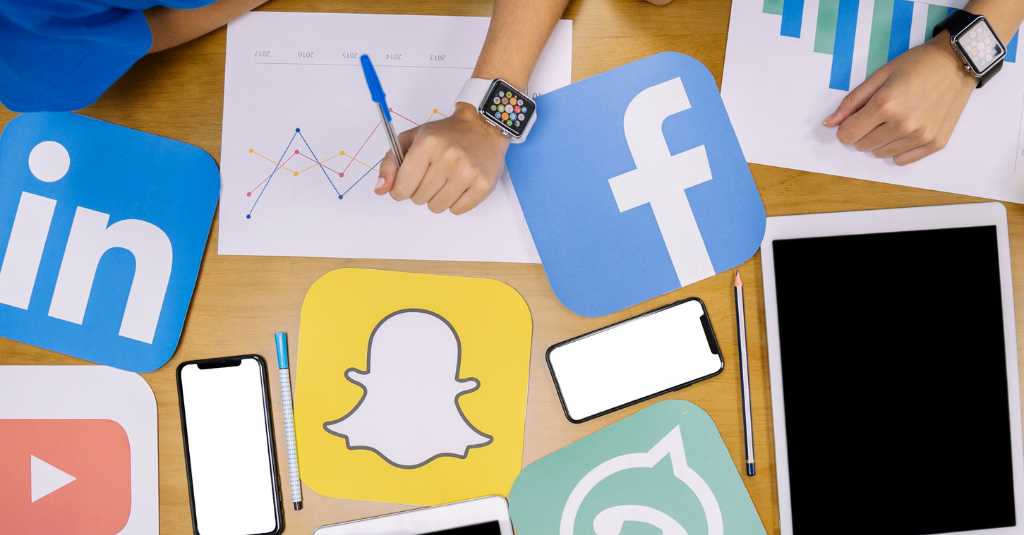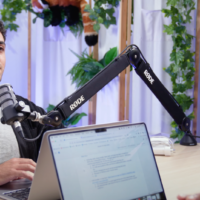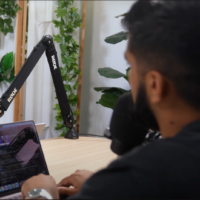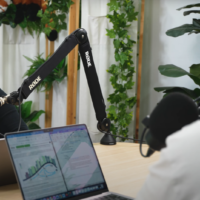You’re sitting in your office when your boss walks in and hits you with a new task – “Look into paid media for our business.” It’s a term you’ve heard before, maybe in passing or at a conference, but now, it’s landed squarely in your court, and you need to make sense of it. How do you navigate this landscape? Which channels should you invest in? What are the benefits and the downsides? And finally, should you manage it in-house or outsource it?
It can be overwhelming, can’t it?
The good news is, you’re in the right place. This article is here to become your trusted guide in the world of paid media. And you’re in safe hands – our paid media team has managed budgets from $50 per day all the way up to and over 6 figures a month.
We’ll peel back the layers on this topic, revealing not only what paid media is but also helping you identify the best channels for your business, understand its pros and cons, and guide you through the crucial decision between managing it internally or outsourcing.
Let’s make you a paid media whizz, shall we?
Here’s what you’ll be learning:
What is Paid Media?
Paid media refers to any form of digital marketing that requires payment to place your brand, product, or service in front of your target audience.
It encompasses a broad range of channels – including social media advertising on platforms like Facebook, Instagram, or LinkedIn, search engine advertising like Google Ads (pay per click advertising), display advertising and more.
Paid media is an essential component to consider as part of a holistic marketing strategy, working in tandem with owned media (your websites, blogs, social media profiles) and earned media (customer reviews, PR, word-of-mouth).
When you look at paid media as a whole, it can be overwhelming because there’s so many channels and it can be difficult to develop a strategy or think about which channels might be worth investing in for your business.
Which Paid Media Channel Should You Invest In?
The answer to this question is complex because it depends on where your target audience spends most of their time, your business goals, your budget and who is going to run the ads.
Your business goals and budget
Are you trying to drive awareness, generate leads, or drive direct sales?
If you want to focus on driving leads and sales and you have a limited budget to work with, you might opt to use search Ads (Google Ads). This is because search ads work off targeting users who are already searching for specific things across Google. For example, if you sell swimming pools, you could target users who search “swimming pool cost” on Google.
This gets you in front of the right user at the right time. With a limited budget and the primary goal being to drive sales, this may be your best bet.
On the other hand, if your goal was to drive awareness and build interest in your product or service, then social media advertising may be a better choice, since you’ll want to focus on targeting users who aren’t yet searching for your brand.
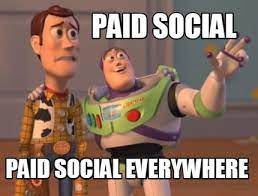
Ultimately, you need to ask yourself, ‘with the resources we have available, what’s the best combination of paid channels to achieve our business goals?’
Where your target audience spends their time
The channel you pick should be influenced on where your target audience spends their time.
For example, if your target audience is professionals in a B2B (business to business) market, LinkedIn might be a good choice for paid media.
On the other hand, if you’re a B2C (business to consumer) company with a visually appealing product, Instagram and Facebook Ads are potentially a more suitable option.
If you’re still having trouble picking channels for your paid media efforts, check out our article on Facebook Ads vs Google Ads for a comparison of two popular ad channels.
Who will be running the ads
If you’re running the ads yourself (or with your team) and there are no paid media specialists involved, then the channels you might choose to user may differ than if you were to outsource this.
For example, less experienced people may find more success advertising across Facebook & Instagram Ads (or other social media ad channels) as opposed to Google Ads, simply because of the learning curve involved.
“I’ve seen more success with people on Facebook who don’t know how to use it because it’s easier to use than other platforms like Google Ads”.
– Tony, Paid Media Specialist at RedPandas
If you don’t have a large budget to outsource your paid media or if there are no paid media specialists in your team, it may make sense to opt for a paid media channel with an easier learning curve, such as Facebook and Instagram Ads. If you want to learn Facebook Ads, here’s a reliable resource to get started with.
Benefits of Paid Media
Paid media can provide several advantages, such as:
- Instant traffic
- Measurable
- Reach high intent users easily
- Multi channel targeting
- Pay per click system
- Retargeting capabilities
Let’s delve into these a little more.
Instant traffic
While organic traffic takes time to build, with paid media, you can start seeing results almost immediately.
Measurable
Almost every aspect of paid media can be tracked, which means you can easily measure Return on Ad Spend and optimise your campaigns based on data.
This is far more optimal than running ads across channels like Radio, TV and Newspaper, where it’s difficult to determine ROI.
Reach high intent users easily
When it comes to Google Ads, you are able to reach high intent users by targeting specific keywords that are related to your products or services.
For example, if your business sells running shoes, you can target keywords such as “best running shoes” or “running shoes for flat feet.” When a user searches for one of these keywords, your ad will appear in the search results, providing the user with an opportunity to click through to a specific page on your website related to running shoes.
In this way, it’s like you’re finding someone who wants a particular product, and sending that person to the exact aisle and section of your shop that has that product at the time the person is searching for it.
As you’re reaching users who are actively searching for a product or service, you’re more likely to generate leads, sales and revenue.
Multi-channel targeting
With paid media, you can literally target users wherever they are online.

For example, with Google Ads, you can target users across YouTube, websites they visit (through Display Ads), Google Search (as they’re searching for things), when they’re browsing their emails, or looking at their Maps app.
Similarly, across Facebook and Instagram Ads, you can target users across all placements of the two channels (such as feeds, marketplace, inbox and shop) as well as when users are accessing third party apps that accept advertisements.
When you think about all of the other social media channels out there, you can probably see how if you wanted to, you could be in your target audience’s face at every turn.
Pay per click system
Some paid media channels run by a pay per click system, such as Google Search Ads. This means that you only pay when someone clicks on your ad.
In other words, even if your ad is seen by 10,000 users but none of them click on your ad – you won’t pay a cent.
In this way, you can ensure that your budget is being spent on actually generating traffic. Do note however that this is only applicable if you run specific campaign types on Google Ads, such as search campaigns.
Retargeting capabilities
Social media ad channels have powerful retargeting capabilities. For example, on Facebook, you can retarget users based on how they interact with your page, your videos, and your website.
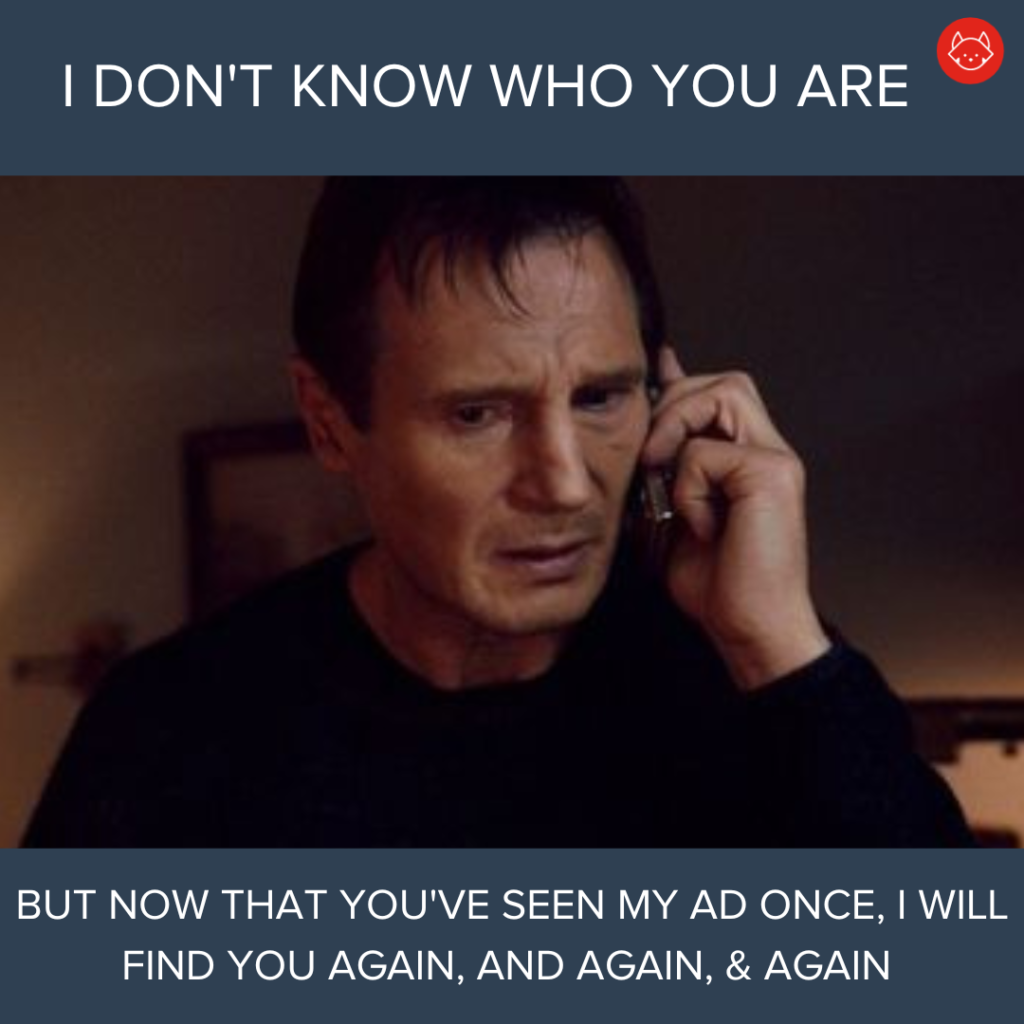
You can choose to be very targeted and specific, which becomes powerful for reaching the right people at the right time.
For example, you could retarget users who have watched 75% or more of one of your specific video ads in the past. In this way, you’re spending money to reach users who have already shown interest in your brand, or interest in particular products/services.
Downsides of Paid Media
While paid media offers many benefits, it’s also important to be aware of its potential downsides:
- Cost
- Complexity
- Dependence
- Creative resource heavy
Cost
Paid media requires an upfront investment, and costs can add up quickly, especially if you’re not managing it all in house.
For example, if you’re running social media ads, you have to think about the cost of the ad itself, but also the development of creatives (images and videos) that need to be produced too. Developing effective ad creatives takes time, and if you or your team doesn’t specialise in this, you may need to consider outsourcing this part of the process.
On top of this, if your business is outsourcing the ad setup and management itself, consider these costs too.
While paid media costs can add up quite quickly, you’re able to track and measure ROI in real time, which means there won’t be any surprises.
Complexity
Regardless of the channel you use, managing paid ads is complex. While some channels have smaller learning curves (like Facebook Ads) it still requires knowledge and skill, time and hard work to get things off the ground.
If you have the flexibility to be able to trial campaigns and test, test, test – then that’s fantastic. But, if your company has a tighter budget and very clear KPIs, then consider hiring an expert that specialises in this area.
Dependency
Over-reliance on paid media can lead to a “pay-to-play” scenario where your visibility is primarily driven by your ad spend.
When this happens, you end up relying too much on paid media for growth, and if you’re not spending money on ads, you’re not growing.
This is not an ideal scenario to end up in. Ideally, you should have a myriad of channels generating revenue for your business (both paid media channels and organic channels).
While paid media can help you reap amazing rewards, an over-reliance on it can transform into a massive downside.
Creative resource heavy
To succeed on social media ads long term, you need to test many creatives. This requires a significant time investment to produce suitable creatives on an ongoing basis.
On top of this, it requires someone with the skill to create eye-catching creatives that capture attention and prompt action.
One way to negate this downside is to use Canva, the free design tool (also has a paid version) to build creatives.
Outsourcing Paid Media vs Going In House
The decision to manage paid media in-house or outsource to an agency depends on several factors like your budget, expertise, and capacity.
At RedPandas, while we offer paid media services for clients, we also coach businesses to become self-reliant so that they never need to outsource again.
We believe that if an agency does their job right, the client shouldn’t continue to require services from an agency long term.
If you want to learn more about our coaching services, you can find out about what’s included here.
In saying that, it may make more sense for you to outsource your paid media. Let’s take a look at both options.
In-house Paid Media Management:

Running your paid media campaigns in-house gives you full control over your strategy. On top of this, you’ll find that work gets done faster because there’s less red tape. When you insource, your work is being done by team members that live and breathe your company, as opposed to specialists that are working across multiple companies.
But, it also means you’ll need to invest time and resources into hiring and training a team, staying up-to-date with the latest trends and tools, and managing the campaigns.
Ultimately, we’ve seen insourcing your team produce more money in the longer term but it does require a higher upfront investment than outsourcing.
On the other hand, if you don’t have the budget for a shorter-term investment, then outsourcing may make more sense. Let’s take a quick look at outsourcing.
Outsourcing to a Paid Media Agency:

Outsourcing to a specialised agency provides access to a team of experts who live and breathe paid media. They’re familiar with the best strategies, tactics, and tools, and they can provide a fresh perspective on your campaigns.
You’ll also save time on training and managing an internal team.
However, outsourcing will require an investment and you’ll need to maintain clear communication with your agency to ensure alignment with your brand and goals. Since your agency will be managing other clients as well, you won’t be their main focus, so there will be some delay in communications.
Ultimately, the choice between in-house or agency comes down to your unique circumstances and needs. If you’re still struggling on deciding to outsource, you can check out an article we wrote which delves into outsourcing vs insourcing.
So, what’s next?
Paid media is an expansive realm, but with the right knowledge, it doesn’t have to be daunting.
Whether you’re delving into Facebook Ads, Google Ads, or other channels, the key is understanding your audience, aligning with your business goals, and continuously optimising your approach based on data.
Remember, the decision to manage your paid media in-house or outsource isn’t a one-size-fits-all answer. Evaluate your resources, budget, and goals to make an informed decision.
Armed with this knowledge, you’re now well-equipped to discuss and implement paid media strategies in your business. Go ahead and impress your boss with your newfound expertise.
Next, learn about some of the most common problems with paid media agencies so that you can avoid these.
